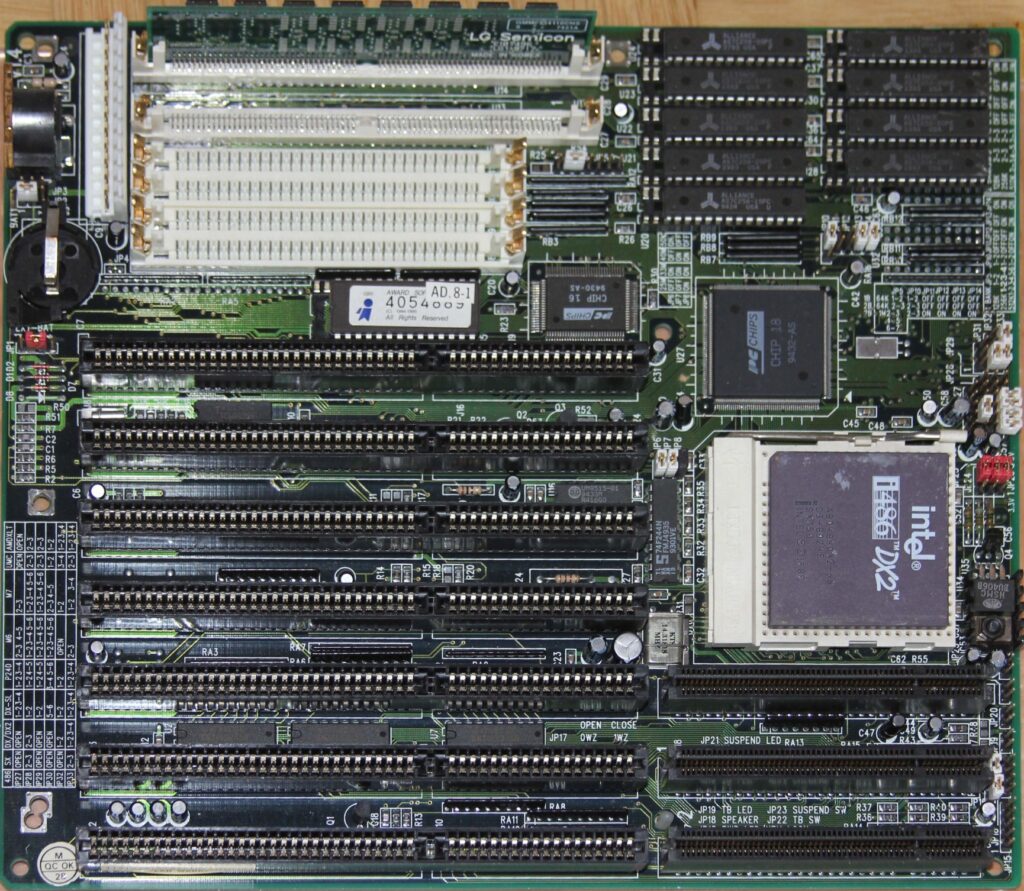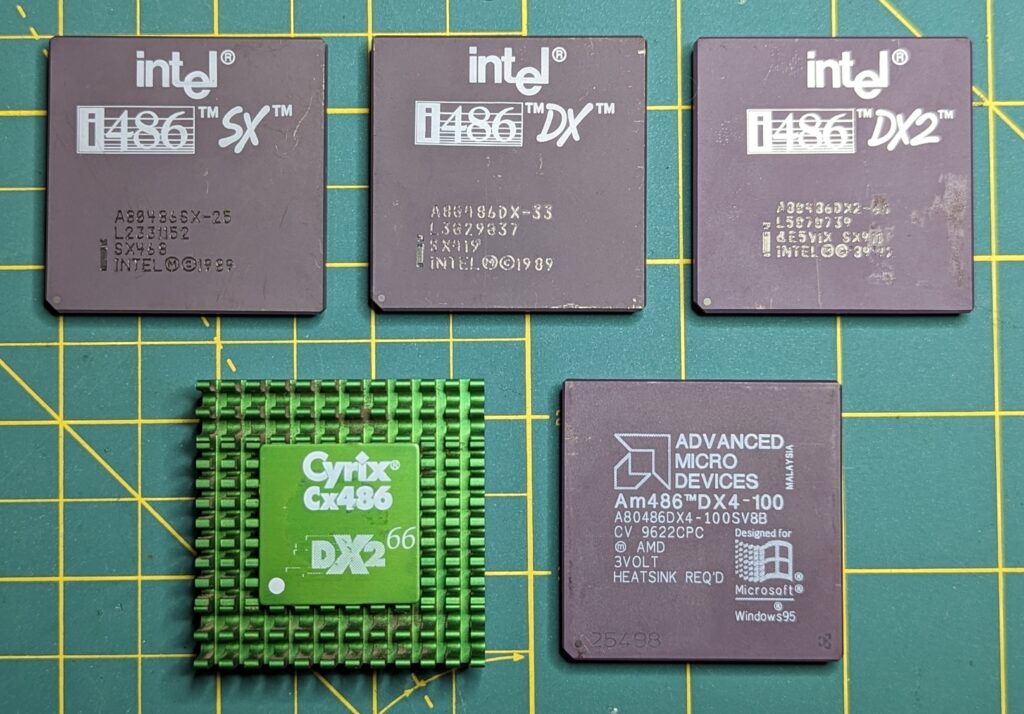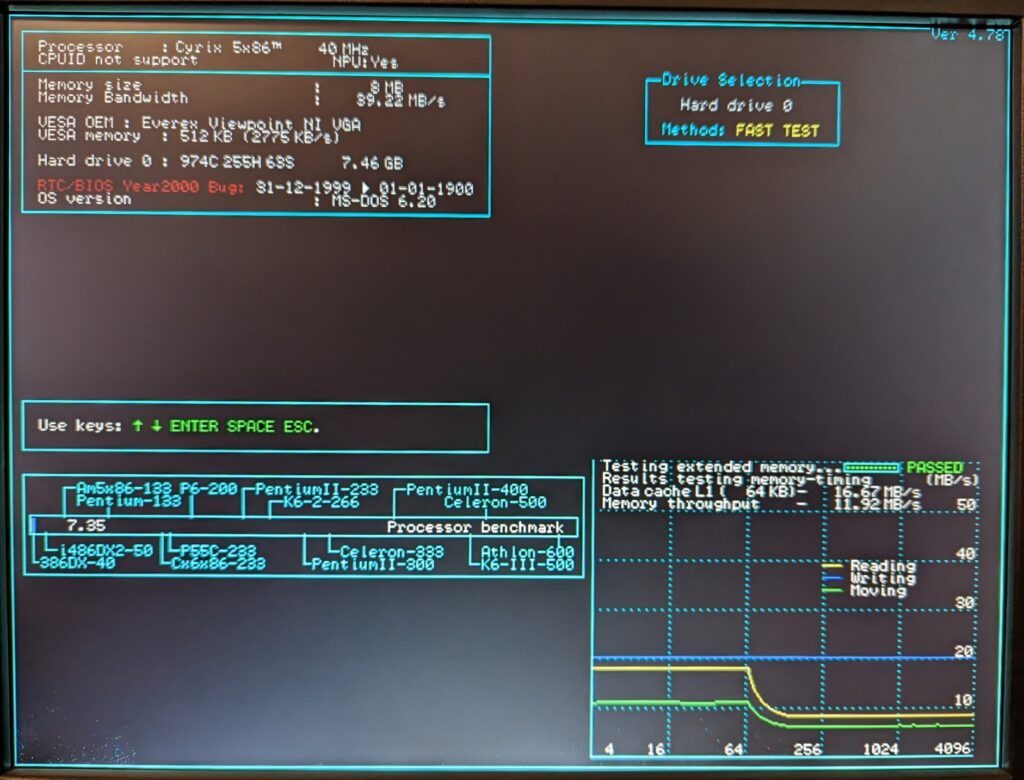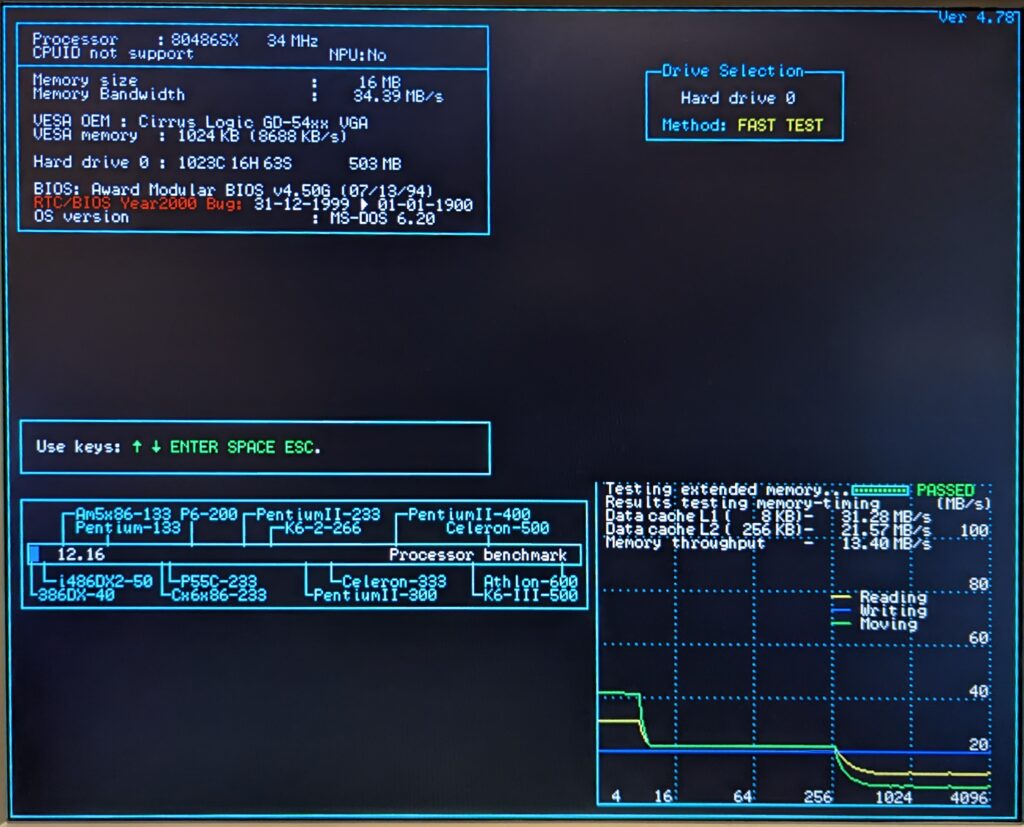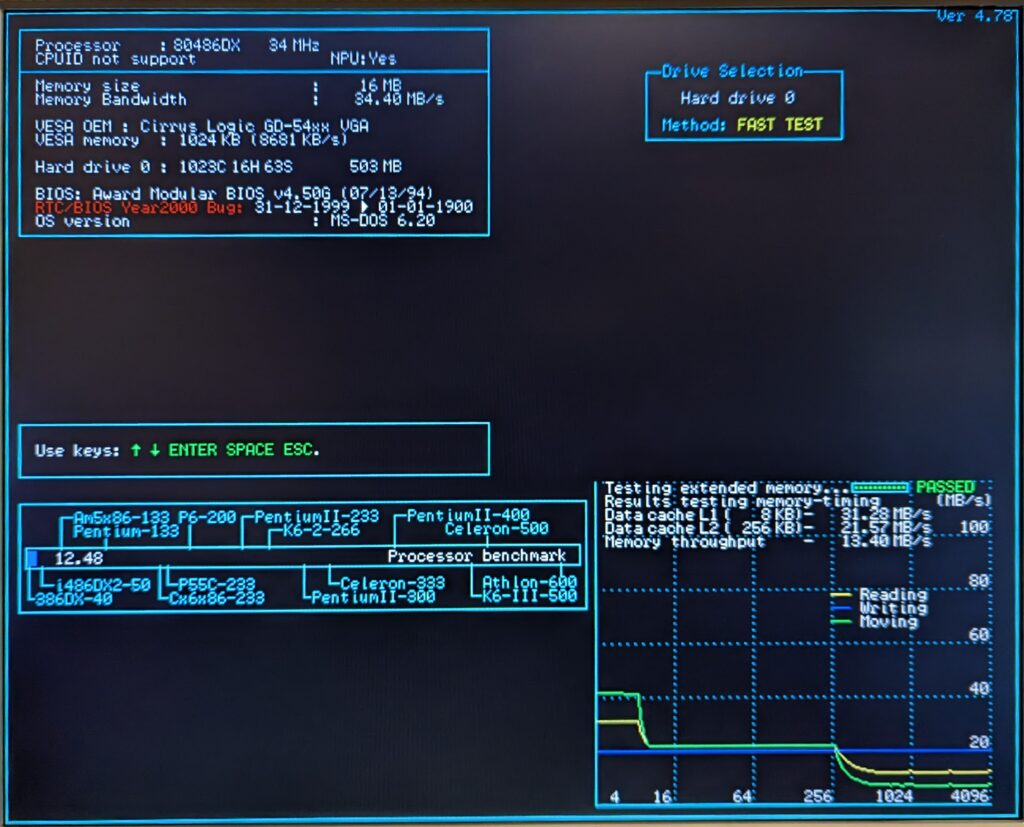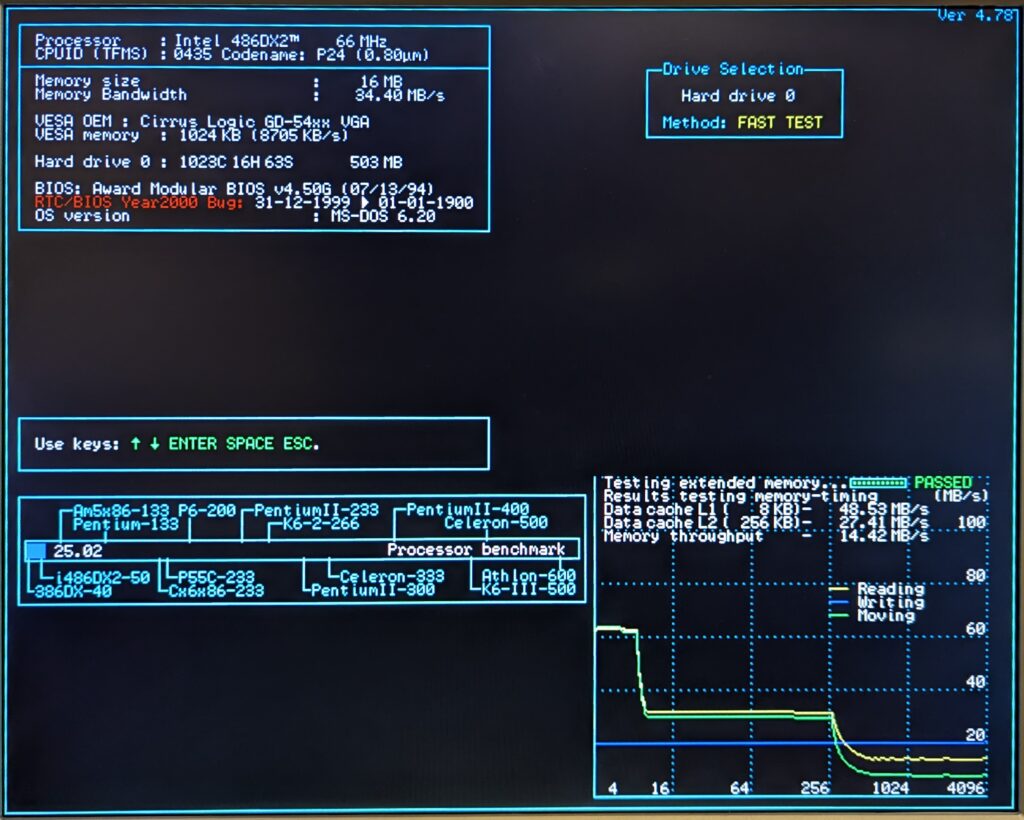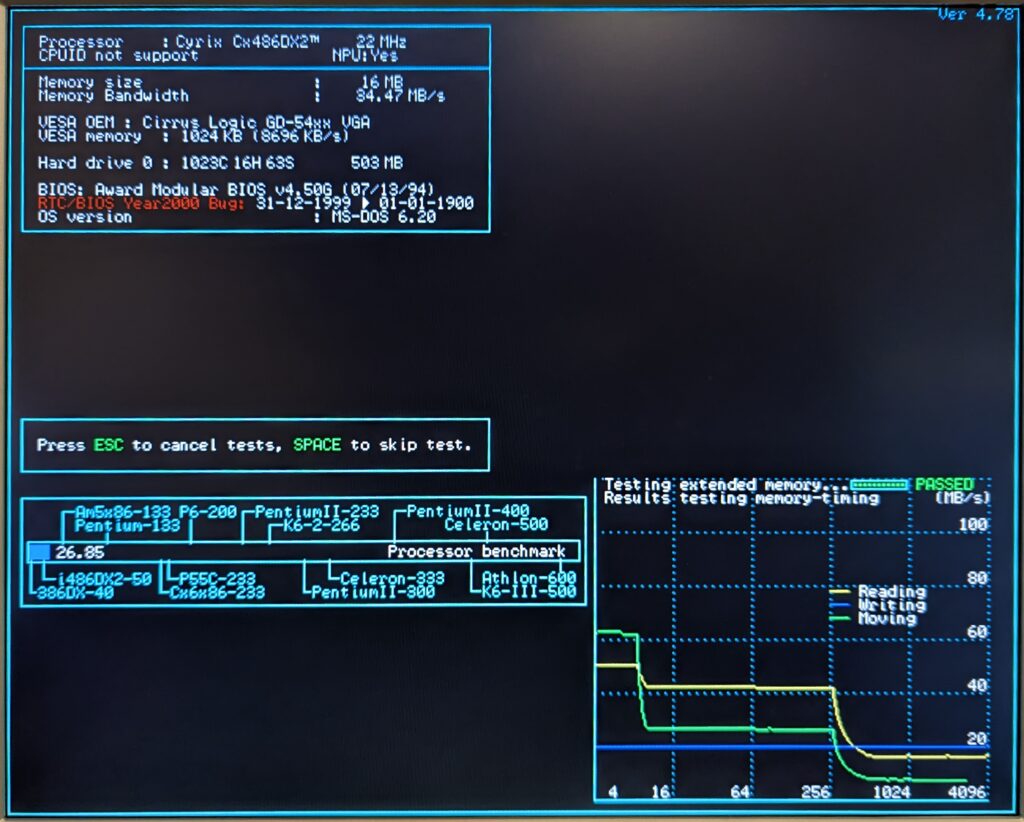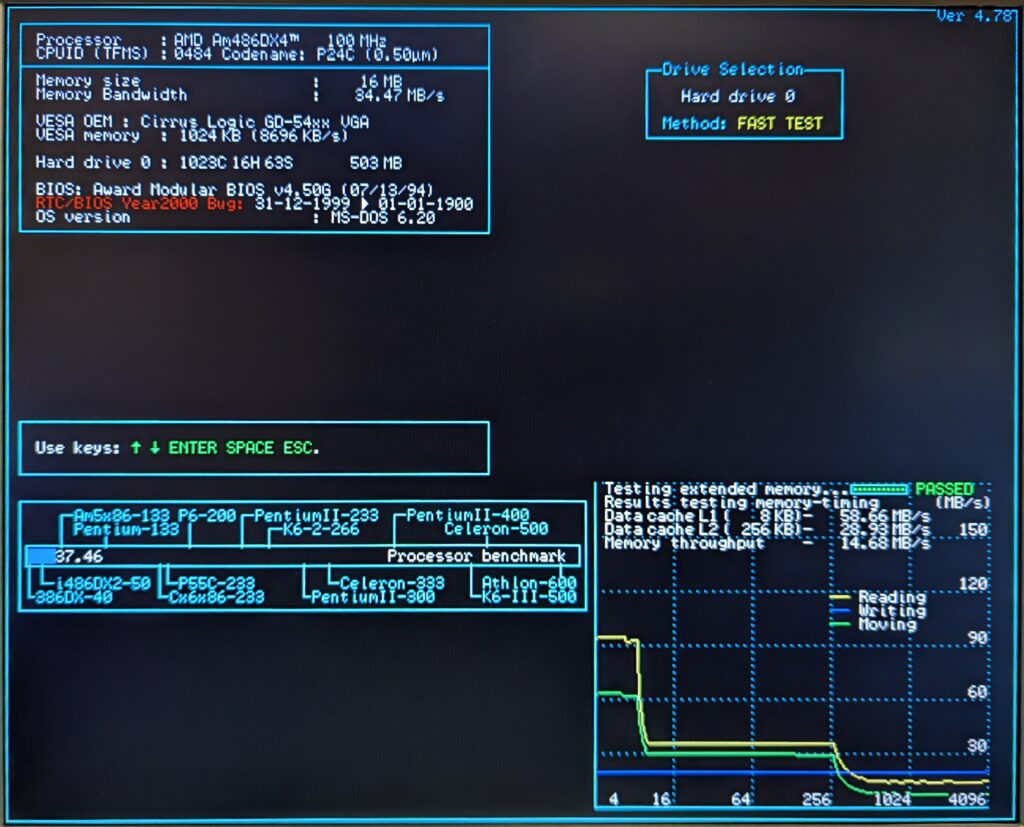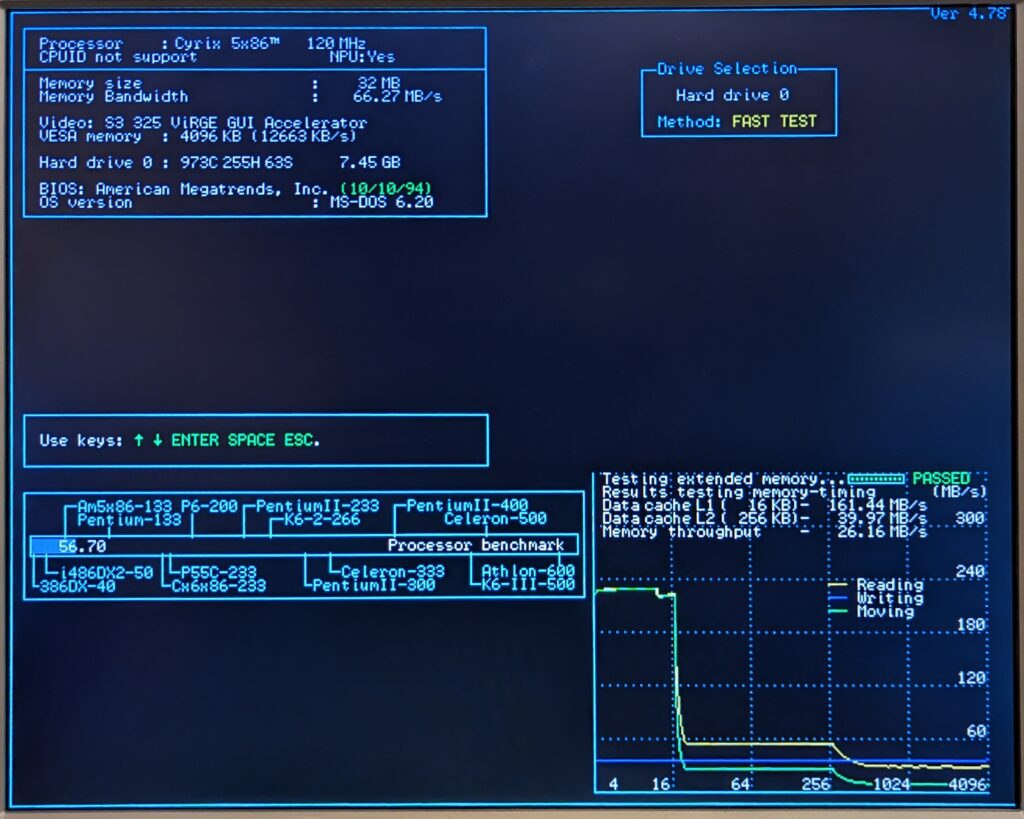Having recently restored my old 486SLC board, I was curious how it stacked up against other 486s of the era. I actually have a fairly decent collection of chips from this time period and a few motherboards that accept them.
For the majority of this test, I used a PerComp branded board made by PC Chips, (model M912) that has a fairly broad range of support for these CPUs and is based on the PC Chips “Chip 16″/”Chip 18” chipset. The board is configured with 256KB of L2 cache, 16MB of 32-pin SIMM memory and supports 7x 16-bit ISA expansion slots, 3 of which support 32-bit VLB cards.
One funny thing about this board is the branding on the chipset. At the time PC Chips didn’t have a great reputation for performance. In an attempt to boost their sales, they often placed stickers on their chips with the model numbers of other more popular chipsets.
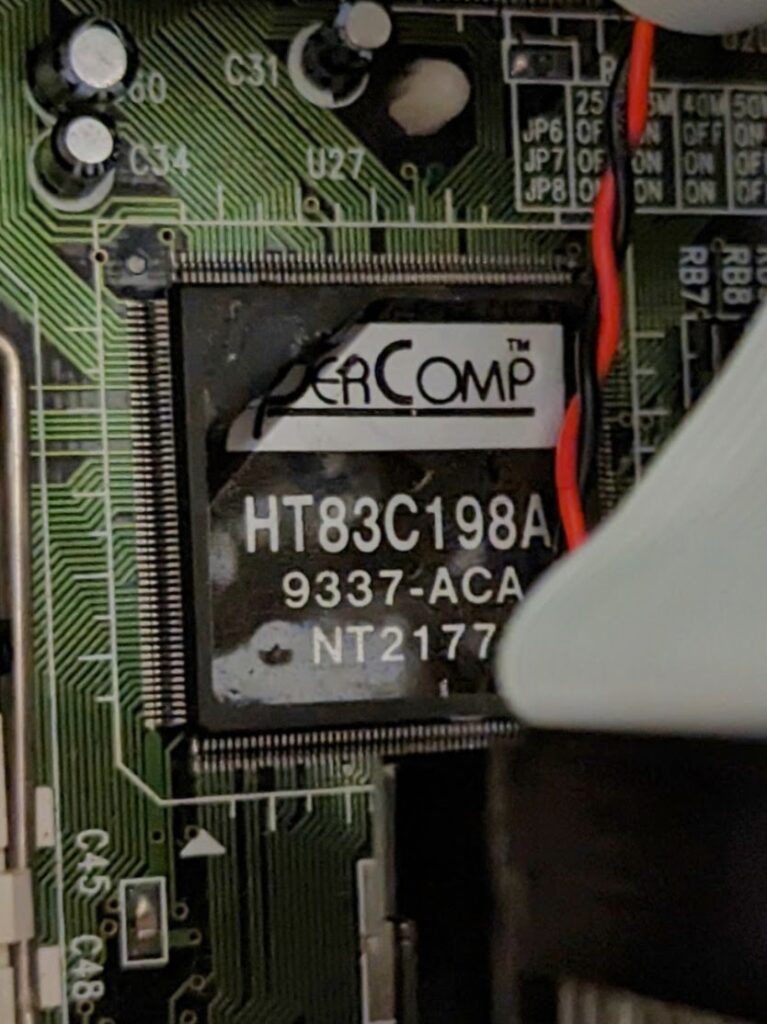
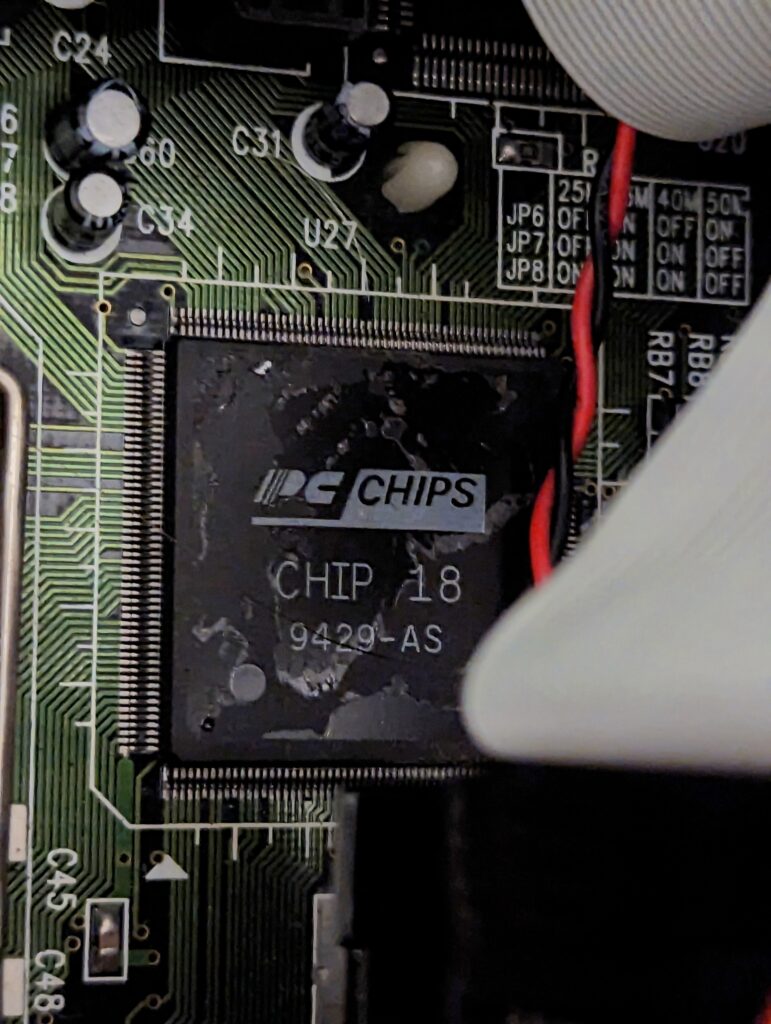
Alright, enough of the history… let’s get into the testing! The chips I selected for the test were several Intel CPUs, a couple of Cyrix CPUs and a single AMD CPU. These were as follows: i486SX-25 (overclocked to 33Mhz), i486DX-33, i486DX2-66, Cx486DX2-66, Am486DX4-100, Cx5x86-100 (overclocked to 120Mhz)
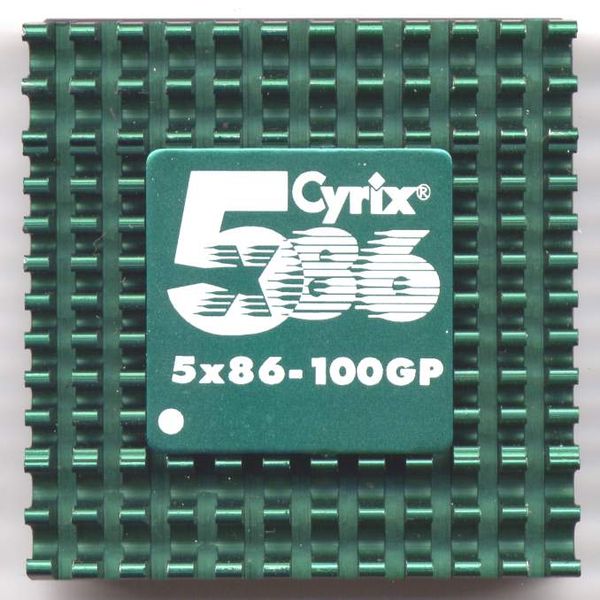
The five 486 CPUs shown above all contain 8k of L1 cache on-die. They were all tested on the same motherboard mentioned above, which was configured with 256k of L2 cache.
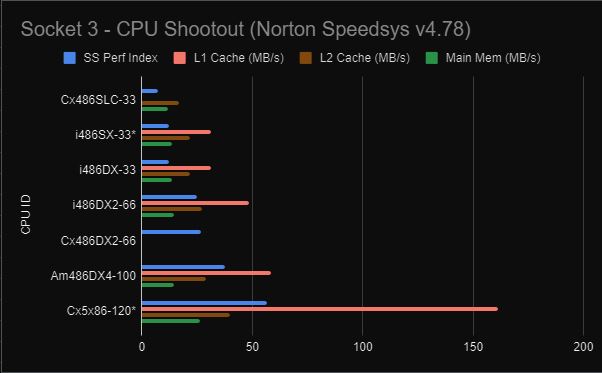
I’ve also included the 486SLC numbers from a previous test. The SLC and the 5×86 aren’t a good direct comparison since the motherboard and configurations are quite different. Unfortunately, I managed to kill the Cyrix 486DX2-66 when I tested it the second time and wasn’t able to get cache and system performance numbers, but an image with the last screen it produced is included below.
What was most interesting to me were the results for the Intel SX and DX chips clocked at 33Mhz. All of the results from these 2 chips were identical except for the performance index. (which is lower on the SX as it lacks an FPU) What this tells me is that unlike the 3rd generation, Intel’s 4th generation SX chips were fully 32-bit externally. The i386SX was 16-bit externally and was dramatically slower as a result. Likewise the Cyrix 486SLC also suffered in this test due to its 16-bit external bus. I suspect Intel’s 4th generation SX chips were simply lower binned parts from the DX production line that had defects in the FPU section of the die. Simply disabling the FPU by cutting/burning the traces between it and the CPU section of the die would allow these otherwise defective chips to be sold, albeit as a lower-end model.
It’s a shame the Cyrix DX2-66 gave up the ghost during the test. However, it’s not a chip I was likely to put back into use in any of these systems. What data I did get from it confirmed my recollection of the CPU. It was slightly faster than the Intel DX2-66 in integer ops, but was a bit slower in floating point due to a weaker FPU design.

